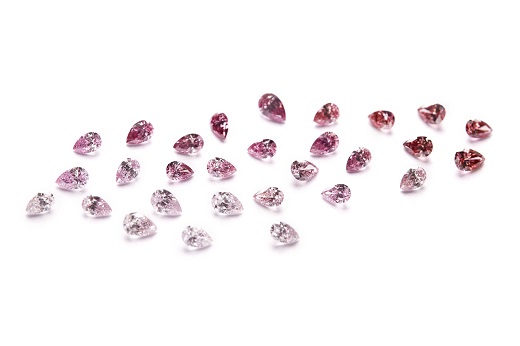Labs Identify Fingerprint for Argyle Pinks
 RAPAPORT... Two gem labs have joined forces to identify a method for determining whether a pink diamond came from the Argyle mine in Australia, and are issuing lab reports confirming their provenance.Beginning in 2014, the team, led by Branko Deljanin,director and colored-diamond specialist at Canadian Gemlab (CGL), begancollecting natural pink diamonds from the mine in Western Australia, as well asfrom six other countries. It also tested pink synthetic diamonds grown usingchemical vapor deposition (CVD) and High Pressure-High Temperature (HPHT), aswell as those that were irradiated or annealed. CGLand GemResearch Swisslab (GRS) found that Argyle stones typically gave off blue light when under an ultraviolet lamp, with the nature of that fluorescence changing depending on whether they are exposed to short-wave or low-wave rays. Stones from Canada, Siberia, Brazil and Africa did not fluoresce at all.This discoveryled them to define Argyle pinks as type IaAB, which separated them from pink diamonds found in other countries. The group also uses spectroscopy tests, such as infrared and photoluminescence, to confirm the provenance, Deljanin told Rapaport News.While Argyle has produced pink diamonds since 1985, owner Rio Tinto - which sponsored the research - only began laser-inscribing the stones in 2005, according to Deljanin. The miner also only tags stones above 0.20 carats, while CGL and GRS cantest pink diamonds as small as 0.02 carats. The ability to differentiate Argyle diamonds has become more important as the mine reaches its end of life in 2020."There is a 15% to 30% premium on pink diamonds with provenArgyle origin," Deljanin explained, noting that both CGL and GRS could test unmountedstones and issue a report stating a diamond originated from Argyle. The labs can also differentiate between greyish-blue Argylediamonds and those from other parts of the world, Deljanin added. Those originating in Western Australia contain impurities such as nitrogen and hydrogen, while those found in other areas, such as Brazil, South Africa or India, are colored byboron. Image: Pink diamonds from the Argyle mine. (Rio Tinto)
RAPAPORT... Two gem labs have joined forces to identify a method for determining whether a pink diamond came from the Argyle mine in Australia, and are issuing lab reports confirming their provenance.Beginning in 2014, the team, led by Branko Deljanin,director and colored-diamond specialist at Canadian Gemlab (CGL), begancollecting natural pink diamonds from the mine in Western Australia, as well asfrom six other countries. It also tested pink synthetic diamonds grown usingchemical vapor deposition (CVD) and High Pressure-High Temperature (HPHT), aswell as those that were irradiated or annealed. CGLand GemResearch Swisslab (GRS) found that Argyle stones typically gave off blue light when under an ultraviolet lamp, with the nature of that fluorescence changing depending on whether they are exposed to short-wave or low-wave rays. Stones from Canada, Siberia, Brazil and Africa did not fluoresce at all.This discoveryled them to define Argyle pinks as type IaAB, which separated them from pink diamonds found in other countries. The group also uses spectroscopy tests, such as infrared and photoluminescence, to confirm the provenance, Deljanin told Rapaport News.While Argyle has produced pink diamonds since 1985, owner Rio Tinto - which sponsored the research - only began laser-inscribing the stones in 2005, according to Deljanin. The miner also only tags stones above 0.20 carats, while CGL and GRS cantest pink diamonds as small as 0.02 carats. The ability to differentiate Argyle diamonds has become more important as the mine reaches its end of life in 2020."There is a 15% to 30% premium on pink diamonds with provenArgyle origin," Deljanin explained, noting that both CGL and GRS could test unmountedstones and issue a report stating a diamond originated from Argyle. The labs can also differentiate between greyish-blue Argylediamonds and those from other parts of the world, Deljanin added. Those originating in Western Australia contain impurities such as nitrogen and hydrogen, while those found in other areas, such as Brazil, South Africa or India, are colored byboron. Image: Pink diamonds from the Argyle mine. (Rio Tinto)